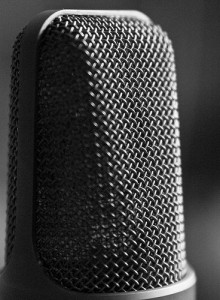USB vs Analog Microphones: Pros and Cons
 The first condenser mic was invented in 1916 by E. C. Wente. Microphones have remained analog since then until recently with the popularization of USB-enabled devices.
The first condenser mic was invented in 1916 by E. C. Wente. Microphones have remained analog since then until recently with the popularization of USB-enabled devices.
Although it’s an exciting innovation, USB options aren’t for everyone or for every situation.
While USB mics have much to offer in the area of plug-and-play convenience, the trend hasn’t taken over the high-end market. For the time being, USB mics are intended for musicians with a limited budget, frequent travelers, and podcasters.
The first advantage of USB microphones is price. You don’t need an audio interface that essentially transforms analog XLR input into a digital signal. While most musicians would want this anyhow for instrument recording, podcasters, vocalists and casual tinkerers don’t necessarily.
USB mic’s greatest advantage may be portability and ease of use. For people that prefer to work on a laptop, mobile device and on the go, the ability to plug in directly without dealing with external gear is a big plus.
Where most USB mics fall short is sheer sound quality and technical limitations. Don’t give me wrong, a Blue Yeti sounds great for the price. However in higher price brackets, classics like the Pearlman TM-1 or L47MP MKII are on a different level. Although Blue has attempted to appeal to the pro market with the Yeti Pro, USB mics still have a long way to go before they can compete with the best XLR mics.
The vast majority of USB mics are 16-bit (CD quality) which by today’s standards is adequate but far from cutting-edge. If you’re doing a YouTube video, a podcast or even a vocal track on a home demo it’s more than good enough. However it’s a noticeable notch below the sound you’d expect from a pro studio.
The good news is it’s only a matter of time before USB mics have made the jump to 24-bit en masse. The Yeti Pro has set the stage as one of the first. The issue is high resolution is to some degree wasted when the microphone capsule isn’t detailed enough to fully take advantage of the high spec. It’s akin to point-and shoot cameras with high megapixel counts but mediocre quality lenses.
For many the best option is to have both USB mics and analog XLR mics on hand. Big name artists are fully taking advantage of USB devices when on the road. However when in the studio you’d better believe they’re reaching for a vintage Neumann or SM57. It’s all about choosing what is best for the job, and considering external factors.
If you’re curious about the best USB microphones, read my roundup of the top 5 models.